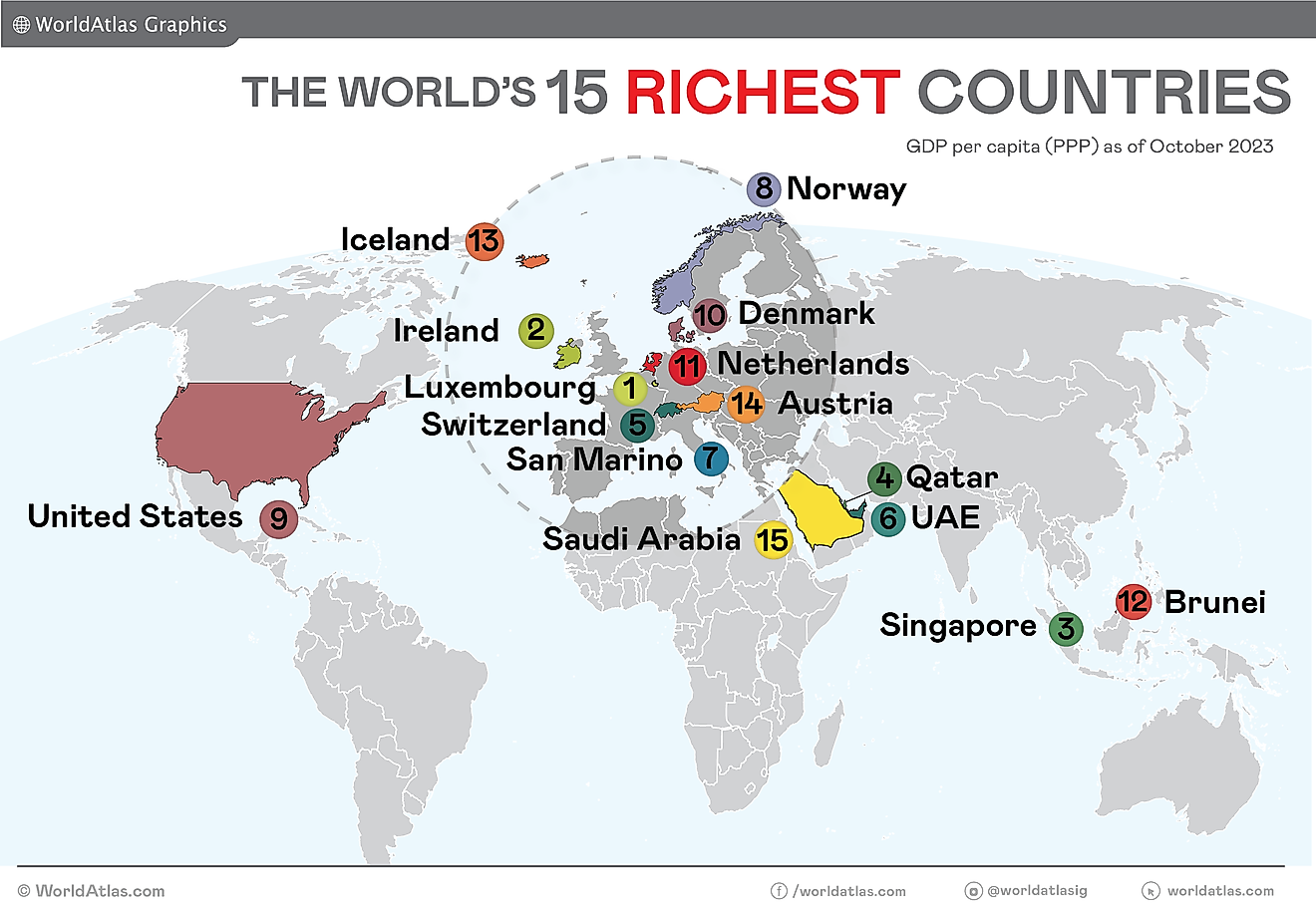
- Known for high-income levels and a low unemployment rate, Luxembourg is the richest country in the world.
- Qatar, a major oil-exporting world center, is the world’s third richest country.
- The resource-rich land with the world’s biggest economy, the United States ranks 8th on the list.
Here is the ranking of the 15 richest countries globally, using their GDP per capita using Purchasing Power Parity (PPP). PPP is a popular metric used by macroeconomic analysts that compare different countries’ currencies through a cost of a “basket of goods” and allows for a more direct comparison of economic productivity and living standards between countries.
1. Luxembourg
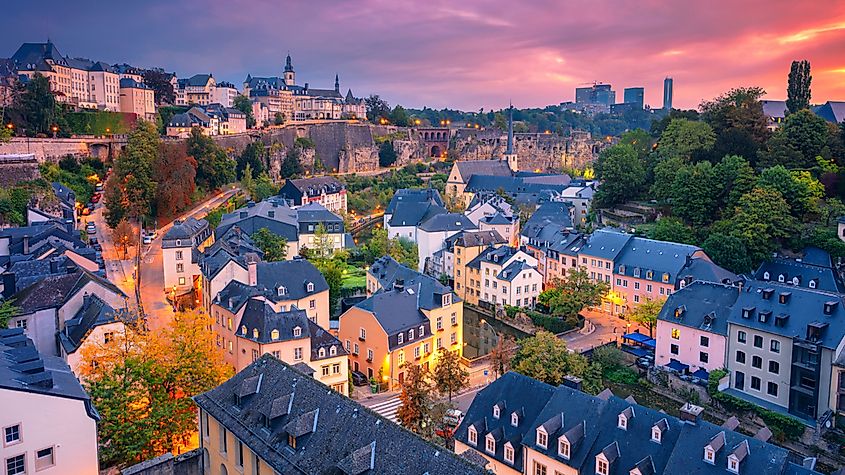
- Population: 625,978
- GDP per capita (PPP): $140,694
Known for high-income levels and a low unemployment rate, Luxembourg is the richest country in the world. While its inflation rate rose to 6.8% in August, 2022, its wealth stays stable. According to the World Economic Forum, the primary factor for Luxembourg’s high GDP is the large number of people working in this tiny, landlocked nation while residing in the neighboring western European countries. The advanced infrastructure and high values for the labor market attract investment and duplicates of the big outside firms.
Having depended on the steel and iron industry for a long time until it stopped bringing profit in the 1970s, the nation adapted superbly. Today, as one of the most educated labor forces in the world, Luxembourg prospers from a mix of industries, predominantly and an import-export economy based on financial services. Small to medium-sized companies expanded, while multinational corporations highly demand a highly-skilled labor force with the ability to speak multiple languages. There is also a small but prosperous agricultural sector in the country.
2. Singapore
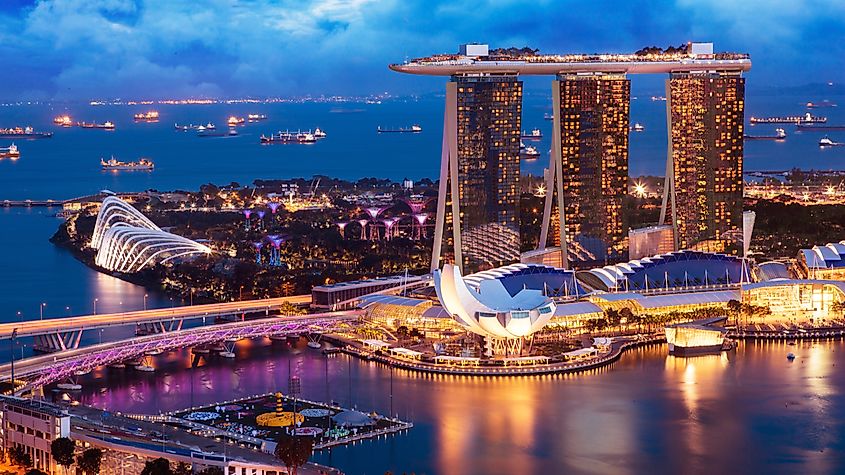
- Population: 5,850,342
- GDP per capita (PPP): $131,580
Having no natural resources to build its economy on has not stopped the hard-working and inventive Singaporeans from turning their country into the second-richest in the world. Being a central world hub for global financial services firms drives the economy. The jobs in manufacturing, services, transport engineering, and logistics pay its citizens well, while electronics, biotechnology, and chemicals are the country’s main exports.
By erecting high-end infrastructure and significantly expanding its tourism sector, Singapore attracts millions of tourists every year. On top of that, the government procured a very investor-friendly economic environment for foreign direct investment.
3. Ireland
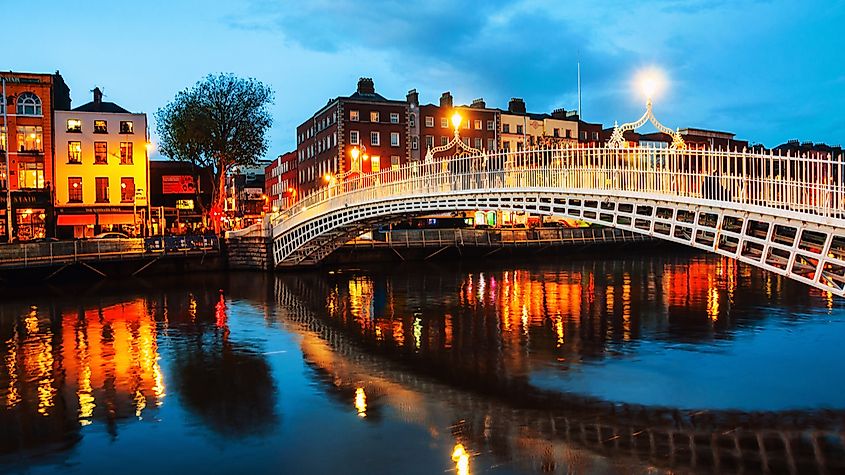
- Population: 4,937,786
- GDP per capita (PPP): $124,596
Ireland has taken Qatar’s third place in the last year. Low corporate taxes continuously attract numerous multi-billion dollar companies to relocate and grow their business in Ireland, contributing to the GDP and the high standard of living for the people. Although citizens receive high wages, the income per capita grows slower than the collective GDP. The country’s stability and ongoing wealth gain from tourism, agriculture, and manufacturing, is coveted by others.
The country’s main exports comprise metals and food products, including brewing, computers, parts and software, and textiles. Ireland is also largely dependent on its tertiary industry, including call centers, legal services, accounting, customer service, stockbroking, and catering.ee trade, open market, and attractively-low tax rates, sought after by international firms and business travelers.
4. Qatar
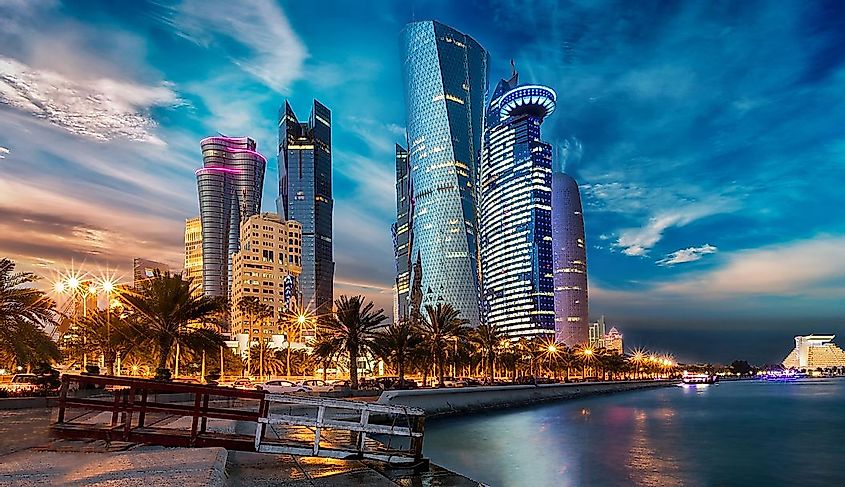
- Population: 2,881,053
- GDP per capita (PPP): $112,789
With only a small fishing industry and almost no schools just fifty years ago, the once-sleeping peninsula off Saudi Arabia’s eastern coast has become a significant oil-exporting world center in the last two decades. Qatar first began massive exports of natural in 1997 to Japan and Spain, expanding to other countries in the early 2000s. Fifteen years and 14 natural gas plants later, its GDP has grown exponentially from $30 billion to over $200 billion. Qatar has the largest natural gas reserves globally, following Russia and Iran, at nearly 900 trillion cubic feet, earning 60% of its collective GDP.
Having discovered oil in 1939 and natural gas 30 years later, it began producing 46,500 barrels per day in 1951. Although some of the revenue was used to start modernizing the country, the Royal Family accumulated much of it, with shares also going to Great Britain, its ruling country. After gaining independence in 1971, Khalifa bin Hamad deposed his father and increased spending on social programs, housing, health, education, and pensions, cutting the Royal Family’s allowances. The country also receives significant returns on investments in foreign brands, banks, and even the Paris Saint-Germain soccer team and real estate in London.
5. Switzerland
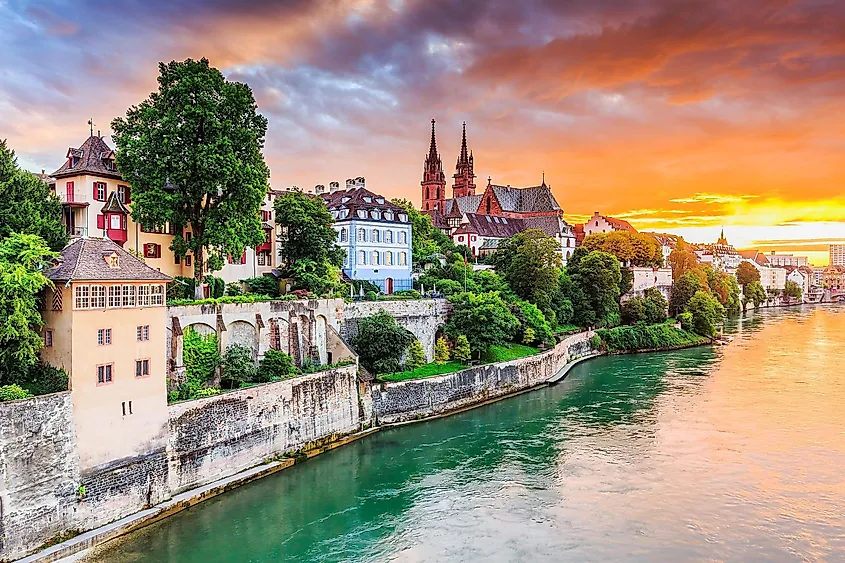
- Population: 8,654,622
- GDP per capita (PPP): $84,658
Considered one of the happiest and healthiest nations on Earth, Switzerland is home to German-, French- and Italian-speaking citizens, living peacefully and thriving together for over 800 years. Even with its high cost of living, expensive products, and services and the Swiss Frank’s extremely high value with a high conversion rate to other currencies, people stream to engage with this country through business or tourism. A stable economy with a fixed currency value, Switzerland is regarded highly by investors searching for a safe haven for highly profitable feats. Attractive tax rates bring in investment, while international companies seek to expand their business to Switzerland.
The Swiss are an innovative bunch, craftily turning natural resources into quality goods such as their highly-demanded chocolate, cheese, jewellery, , home decor, and furniture. Exports contribute the most to the GDP, with gems and precious metals bringing nearly $100 billion a year, followed by pharmaceuticals and machinery. The mountains, the charm of its cities, and the luxurious lifestyle call out millions of tourists every year, while the highly developed tourism sector does not frighten off with its high prices. With no capital gains tax, a low value-added tax on its products at 7.7%, and lower than average income taxes, the Swiss also enjoy investing in their economy, preferring to buy local, paying for garbage disposal and their inexcusably expensive bottles of water.
6. United Arab Emirates
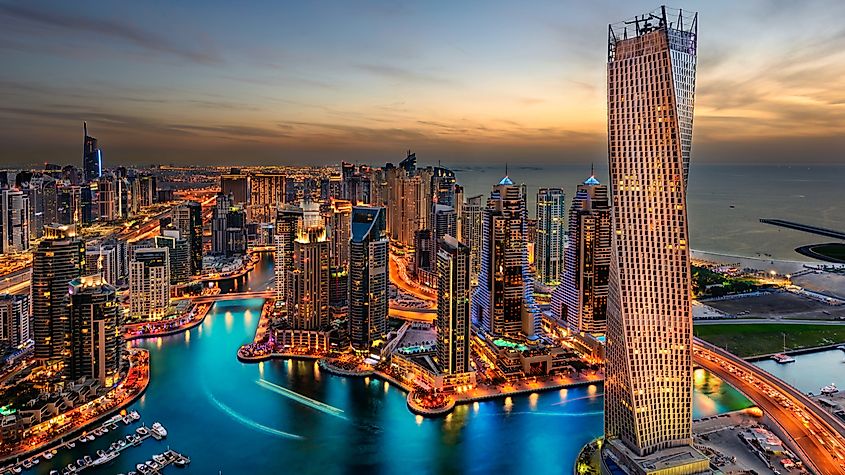
- Population: 9,890,402
- GDP per capita (PPP): $78,255
Back when it was known as the Trucial States, the pearl industry prevailed in this country from the 1770s until the late 1930s, when pearl-diving was a hobby turned into a significant source of income for the people living in the small villages. Having been able to establish some of the most luxurious resorts in the world, Dubai, along with the rest of the country, has moved on to tourism, which keeps investing in itself through ongoing growth and popularity.
The discovery of oil in the late 1950s caused a clash between Dubai and Abu Dhabi citizens, with the latter getting the upper hand over the oil boundaries and becoming richer while the former struggled. While Abu Dhabi thrived, the ruler of Dubai, Sheikh Rashid bin Saeed Al Maktoum, did not lose hope in his state’s potential, loaning tens of billions of dollars to invest in the state’s infrastructure in 1958, completing its first airport by 1960.
7. Norway
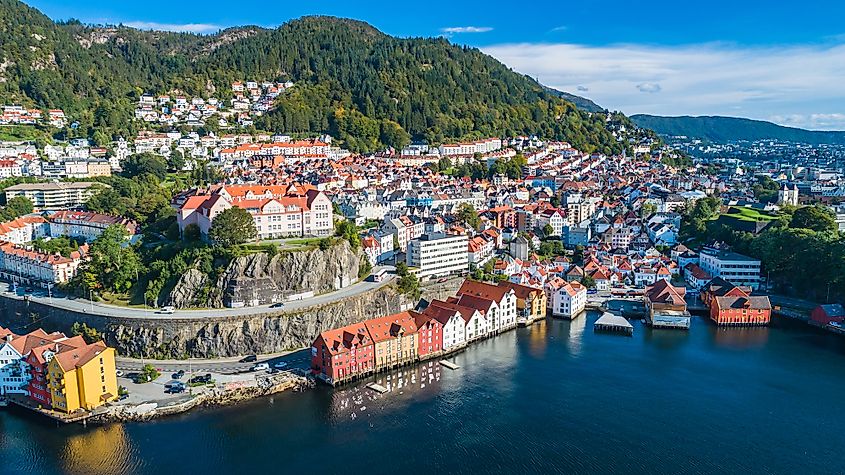
- Population: 5,421,241
- GDP per capita (PPP): $77,808
Norway is known to have the highest standard of living on Earth and rank top on the human development index with its advanced education systems, distinct social security system, and universal health care. Its raw oil and gas resources exports lead the economy, while abundant reserves guarantee future prosperity, including seafood, hydro-power, lumber, minerals, natural gas, and freshwater. Petroleum is another export that has been bringing Norway riches since the 1970s.
The government invests in free education for its citizens, while parents ensure that kids learn the importance of productivity from an early age in school. Keeping busy with work is a cultural staple in Norway, without which citizens do not find joy in life. The main occupancies include telecommunications and technologies. Featuring unemployment and poverty rates at 5% and 0.5%, respectively, it is no wonder that Norway’s standard of living is strived for by other nations. Although things cost a lot in Norway, Norwegians don’t mind investing back into their economy, while having high purchasing power through high wages enables them to spend extravagantly abroad.
8. United States
- Population: 331,002,651
- GDP per capita (PPP): $76,027
With resource-rich land and the biggest economy in the world, the United States has a strong purchasing power. It supplies its energy and can export its oil and gas for profit, and the size of its economy and the high rate of real GDP growth is unmatched by any other country. As a relatively deregulated market economy with a decentralized political system, there are virtually no state-owned enterprises, and the legal system protects the liability of investors. Although such stats attract talented people worldwide to take a shot at earning a fortune, it remains one of the top countries where wealth is not shared equally.
America has an entrepreneurial mindset that is encouraged from an early age and supported by university programs and research institutions. There is also a developed financial system in place of equity finance and a decentralized banking system that supports entrepreneurial activities. Nevertheless, public debt is currently $31,000 billion which is also $7,000 billion higher than pre-COVID-19.
9. Brunei
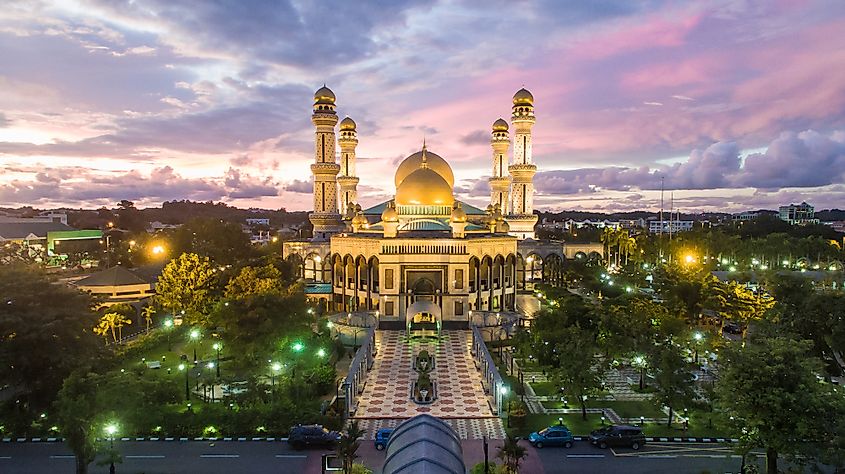
- Population: 437,479
- GDP per capita (PPP): $ 74,953
Having gained independence from Britain in 1984, the small country of Brunei, situated in South Asia, quickly grew to become one of the richest countries in the world. Its Sultan regulates everything from the military to the economy, imposing unique punishing rules and providing free education and medical care for its citizens. Brunei has an over 97% literacy rate.
Brunei is known as the second happiest nation on the continent behind Singapore, which may be surprising, seeing as the country’s wealth is not equally distributed, with much of the population living in poverty. Nevertheless, while the US’s public debt in 2018 was 106% of its GDP, it was only 2.4% in Brunei.
What has made Brunei so rich is its offshore oil drilling industry, bringing the economic riches from export. It is well known that there are people in Brunei who enjoy luxurious things in life, with more car ownership than in most countries in the world. Despite the strict rules on certain things like homosexuality and alcohol consumption, prostitution often goes “unnoticed,” and even the Sultan has had numerous scandalous features written about him for being a “sex-obsessed monarch.”
10. San Marino
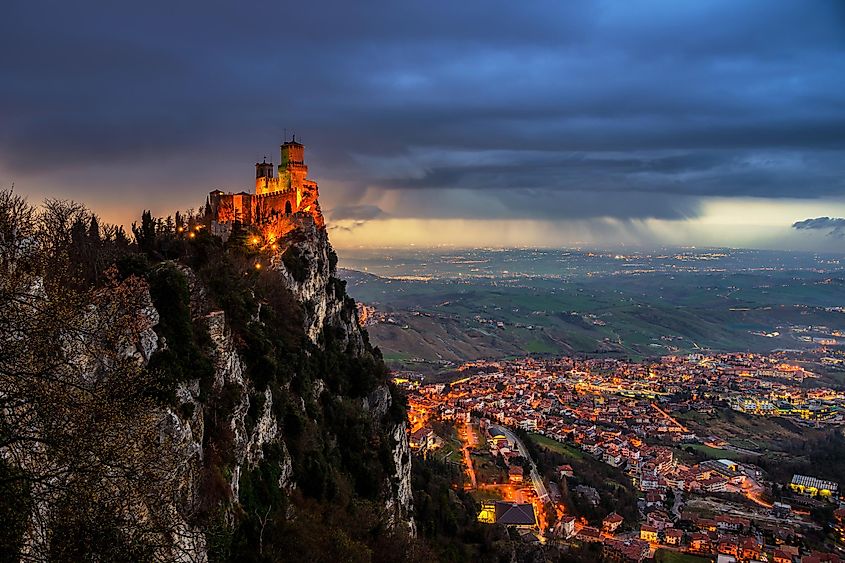
- Population: 33,931
- GDP per capita (PPP): $70,139
The stable and prosperous economy of San Marino is partly owed to its resourceful citizens, who were able to successfully adapt and utilize their available resources. Traditionally, San Marino was a country of farmers and stone-quarrellers, producing cheeses and agricultural products, along with unique trinkets made out of stone. Today its hard-working citizens contribute to the economy by producing ceramics, tiles, building materials, furniture, clothing, fabrics, paints, quality spirits, and wines for export. The export of fruit has also been a factor in the nation’s recent economic growth.
Completely enclosed by Italy, San Marino still retains a close relationship with the country it formerly belonged to, including payments made by the Italian government for monopolies on tobacco and other commodities on this South European microstate. San Marino’s bank system is also closely integrated with the EU’s through the Italian economy: its monetary and customs systems. While the cost of living in San Marino is comparable to Italy, the even distribution of wealth in this socialist society has led to one of the lowest poverty rates in the world. Lastly, with its low local population count and although its, visitors count dropped to 2 million travelers a year, more than half of the country’s GDP owes to tourism.
11. Denmark
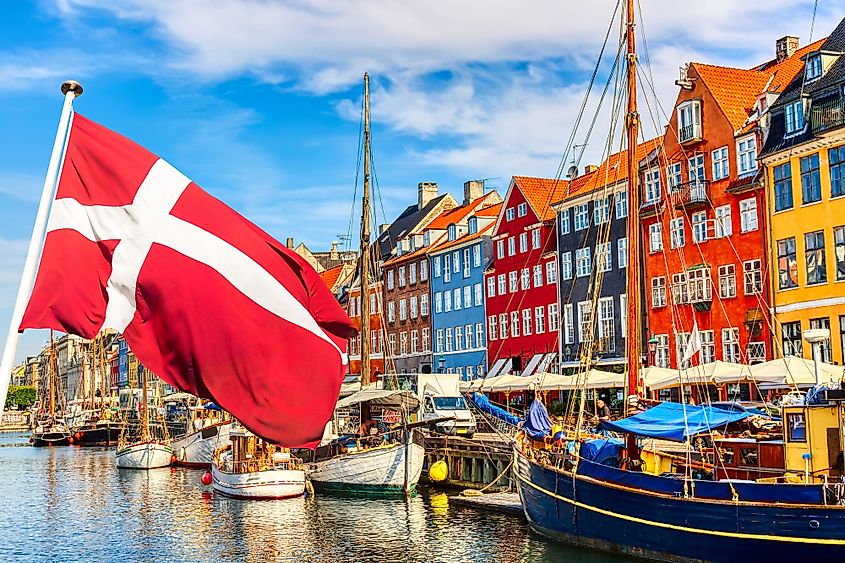
- Population: 5,792,202
- GDP per capita (PPP): $69,273
As measured by the nominal GDP, Denmark has the world’s 35th largest national economy. In 2020, Denmark’s $58,439 Gross National Income per capita was considered the world’s 7th highest. With around 5,792,202 inhabitants living in the country, the mixed economy of Denmark is rightly supported by the high standards of living, dependence on foreign exports and imports, and an improved level of government services and income transfers. According to a report by the World Economic Forum in 2018, the economy of Denmark has been ranked as the world’s 10th and Europe’s 6th most competitive economy. Some of the significant industries in Denmark include construction, medical and transportation equipment, food processing, wind turbines, etc. The country mainly exports fish, meat, dairy products, pharmaceuticals, machinery, crude oil, etc. Denmark exported about 460 million gigajoules of energy in 2018.
12. Netherlands
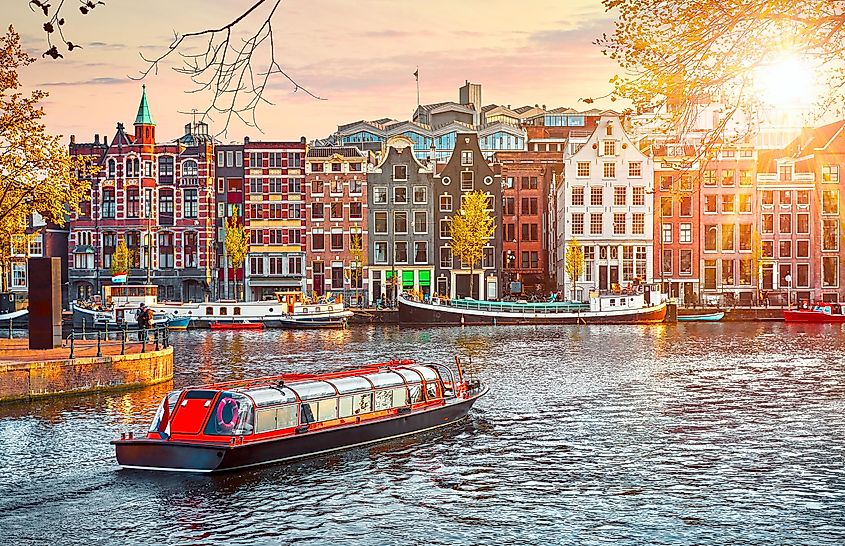
- Population: 17,134,872
- GDP per capita (PPP): $68,572
The Netherlands is considered the world’s 17th largest economy and one of the world’s highest-earning nations. The prosperous and open economy of the Netherlands is heavily dependent on foreign trade, low unemployment and inflation rates, stable industries, and the country’s significant role as the major transportation hub of Europe. Some of the major industries of the Netherlands include petroleum refining, food processing, financial services, electrical machinery, etc. The Netherlands is also one of the world’s leading exporters, with its key trading partners being Germany, the United Kingdom, France, the United States, Russia, China, Italy, and Belgium. According to a report by the World Economic Forum in 2018, the economy of the Netherlands has been ranked as the world’s 4th most competitive economy.
13. Austria
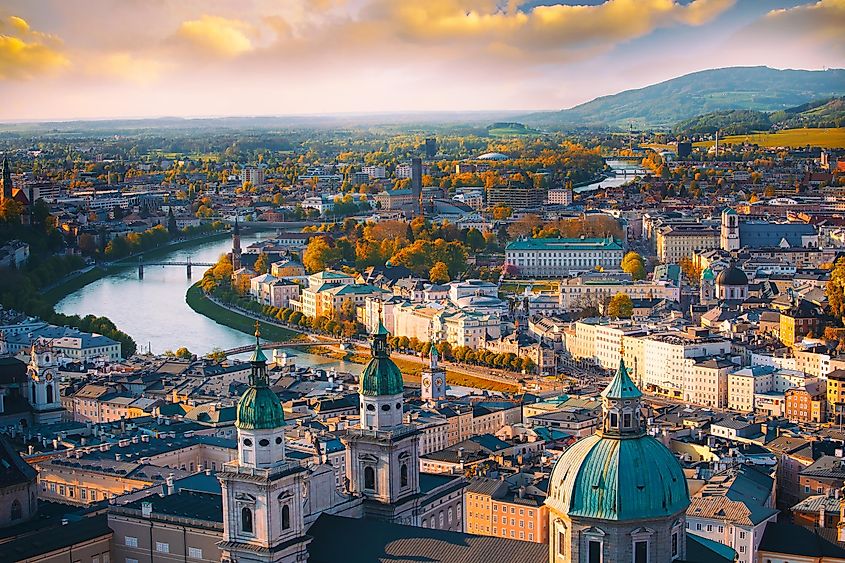
- Population: 9,006,398
- GDP per capita (PPP): $64,751
As measured by the nominal GDP, Denmark has the world’s 30th largest national economy. In terms of GDP per capita, Austria is one of the world’s richest countries due to its highly well-developed social market and industrialized economy. In addition to its highly developed industries, international tourism is also one of the major contributors to the economy of Austria. Well-over-half Austria’s imports and exports come from its trade with the other member states of the European Union.
14. Iceland
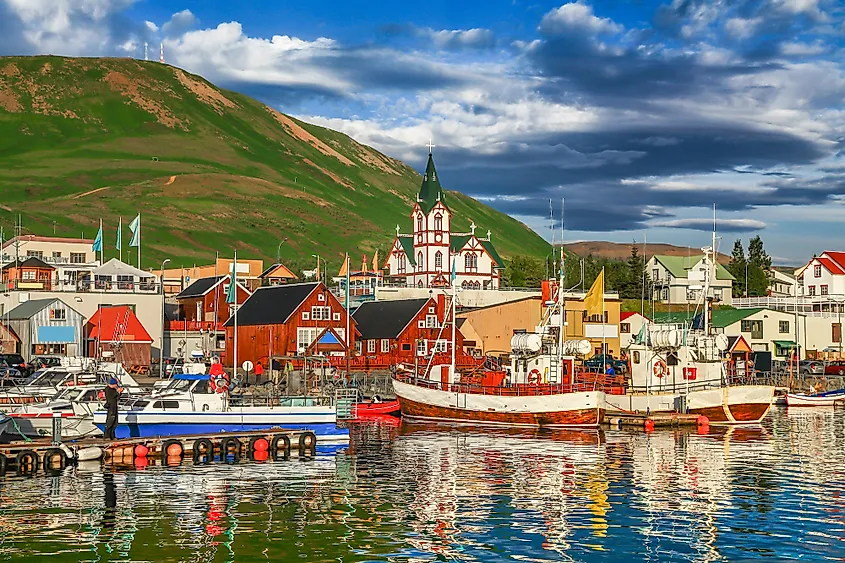
- Population: 341,243
- GDP per capita (PPP): $ 64,621
A very short overall runner-up to Austria, Organization for Economic Cooperation and Development (OECD) also measured Iceland by GDP in 2022 to have the world’s 19th most productive economy. It is estimated that about 85% of the country’s primary energy supply is met from domestically produced renewable sources of energy. The use of hydroelectric and geothermal power has made the country the largest per capita electricity producer in the world. It has also made Iceland one of the world’s top greenest economies. The mixed economy of Iceland heavily relies on the intervention of the government as well as the improved levels of free trade. Some of the major industries of Iceland include tourism, manufacturing, aluminum smelting, fisheries, agriculture, etc. In December 2007, due to the failure of the three largest commercial banks in the country, Iceland was hit by a major financial crisis. As a result, there was a drastic drop in the country’s GDP. Nevertheless, positive GDP growth in 2011 aided by a boost in tourism helped to recover the Icelandic economy.
15. Andorra
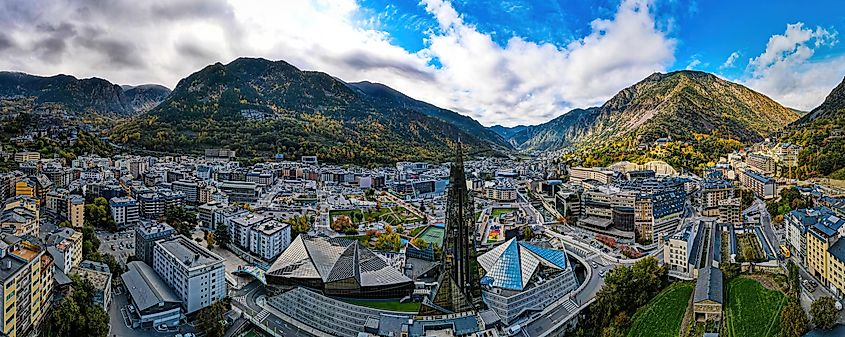
- Population: 77,265
- GDP per capita (PPP): $63,600
Recently, the South European country of Andorra has taken over Germany in the list of the 15 Richest Countries in the World. It is one of the world’s smallest countries, with an area of only 470 km2, as well as one of the least populous, with population density of some 169 people per km2. In 2020, Andorra ranked 165 position by nominal in terms of economy size, while its national debt comprised1,337 millions of dollars or 46.33% debt-to-GDP ratio. The public debt was $17,142 dollars per capita. In 2019 Andorra also ranked 36th out-of 189 countries by the United Nations on the human development index (HDI), which measures the country’s progress.
Territories With High GDP Per Capita
While the table below enlists the countries of the world by GDP per capita, there are some territories that have per capita GDPs that are higher than most countries. In fact, the per capita GDP of Macau, a Special Administrative Region (SAR) of China, is expected to reach GDP per capita of 115000 USD which is higher than Luxembourg, the richest country in the world that is expected to reach 111500 USD. Gambling-related tourism and apparel exports form the backbone of Macau’s economy. The British Overseas Territories of Bermuda ($$110,869) also had a per capita GDP in 2021 that is higher than Switzerland, the world’s 5th richest country. The tourism and financial services sectors are the mainstays of the economy of this territory.
The richest countries listed above exhibit the dominance of European nations on the list. Oil-rich economies like UAE and Qatar from the Middle East also feature on the list. However, with fossil fuel reserves fast depleting in these countries, the future of these nations will depend on how effectively they diversify their economies. The United States is the world’s biggest economy in terms of nominal GDP, ranking 8th, in terms of per capita GDP. With the world changing at an unprecedented rate, the world’s richest countries might see a massive change in rankings in the coming times.
The Richest Countries In The World Ranked
| Rank | Country | GDP per capita (PPP) |
|---|---|---|
| 1 | Luxembourg | 140,694 |
| 2 | Singapore | 131,580 |
| 3 | Ireland | 124,596 |
| 4 | Qatar | 112,789 |
| 5 | Switzerland | 84,658 |
| 6 | United Arab Emirates | 78,255 |
| 7 | Norway | 77,808 |
| 8 | United States | 76,027 |
| 9 | Brunei | 74,953 |
| 10 | San Marino | 70,139 |
| 11 | Denmark | 69,273 |
| 12 | Netherlands | 68,572 |
| 13 | Austria | 64,751 |
| 14 | Iceland | 64,621 |
| 15 | Andorra | 63,600 |
| 16 | Germany | 63,271 |
| 17 | Sweden | 62,926 |
| 18 | Australia | 61,941 |
| 19 | Belgium | 61,587 |
| 20 | Finland | 58,010 |
| 21 | Canada | 57,812 |
| 22 | Bahrain | 57,424 |
| 23 | France | 56,036 |
| 24 | Saudi Arabia | 55,368 |
| 25 | United Kingdom | 55,301 |
| 26 | Malta | 54,647 |
| 27 | South Korea | 53,051 |
| 28 | Kuwait | 50,919 |
| 29 | New Zealand | 50,411 |
| 30 | Italy | 50,216 |
| 31 | Israel | 50,204 |
| 32 | Japan | 48,814 |
| 33 | Slovenia | 48,534 |
| 34 | Cyprus | 48,443 |
| 35 | Czech Republic | 47,527 |
| 36 | Lithuania | 46,479 |
| 37 | Spain | 46,413 |
| 38 | Estonia | 44,778 |
| 39 | Poland | 41,685 |
| 40 | Hungary | 40,944 |
| 41 | Portugal | 40,805 |
| 42 | Bahamas | 40,274 |
| 43 | Slovakia | 38,620 |
| 44 | Guyana | 38,258 |
| 45 | Turkey | 37,488 |
| 46 | Latvia | 37,330 |
| 47 | Romania | 36,622 |
| 48 | Croatia | 36,201 |
| 49 | Panama | 36,085 |
| 50 | Greece | 35,596 |

